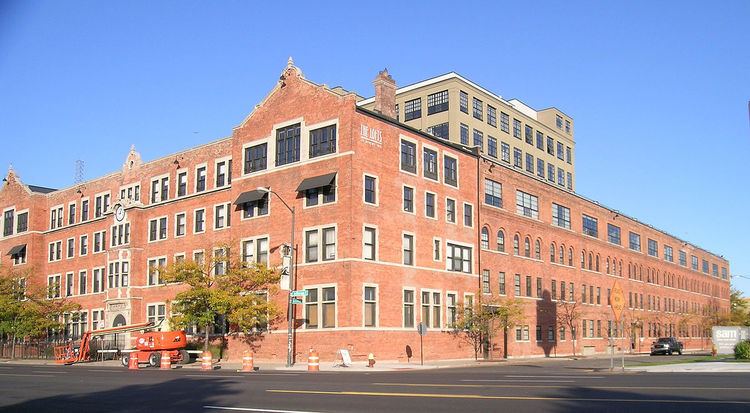Architectural style Other Designated MSHS January 8, 1981 Area 1 ha | NRHP Reference # 80001927 Opened 1899 Added to NRHP 14 October 1980 | |
 | ||
Built 1899; ca. 1910 (addition) Similar Crescent Brass and Pin Comp, Ford Valve Plant, James A Garfield School, Chateau Frontenac Apartments, Willis Avenue Station | ||
The Frederick Stearns Building is a manufacturing plant located at 6533 East Jefferson Avenue in Detroit, Michigan. The building was listed on the National Register of Historic Places in 1980 and designated a Michigan State Historic Site in 1981. It has been converted to condominiums.
Contents
History
Frederick Stearns & Company, established in 1855, was a leading pharmaceutical manufacturer in 19th century Detroit. In the late 1890s, Frederick K. Stearns (son of the firm's founder, Frederick A. Stearns) commissioned William B. Stratton to design this building (Stratton also designed Stearns's personal home, the Frederick K. Stearns House, a few years later). Construction was completed in 1899 at a cost of $85,000. It originally contained Stearns's production facilities, as well as warehouses and white-collar offices.
The building was converted into condominiums in 1989, and is now known as the Lofts at Rivertown.
Description
The building was originally three stories in height; a fourth floor was added later. The original building, with its upper story addition, is constructed from brick. The façade is symmetric, with projecting pavilions at each end and another in the center; this front section, which housed the company offices, is 13 bays wide and five bays deep. The center paviolion contains an arched stone entryway and a clock on the third floor. Each window in the Jefferson façade is trimmed with limestone. Fourth-floor gables above the end paviolions add to the appeal of the building.
A taller concrete addition, the top of which can be seen from Jefferson, was built around 1910. This addition was designed by Albert Kahn.
